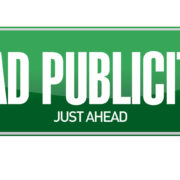
It’s time to have the talk.
The KPI talk.
And if you’re reading an article about IT marketing KPIs, then you should know what your marketing goals are.
If you don’t know what those are, then you should probably figure them out first. It’ll be pretty hard to establish KPIs on goals that don’t exist.
You can get help establishing your goals here.

First things first, what’s an IT marketing KPI?
Let’s go ahead and put IT marketing KPIs into terms that are easy to understand:
Imagine you decide to start a new diet, but you don’t know how much you weigh or what your ideal weight is. Even without this information, you start working out and eating healthier.
After a few weeks, you notice some differences.
Your waist seems smaller and your pants appear to be fitting better. But that’s the thing . . . it might be doing all of that. You don’t know for certain what kind of impact it’s having.
And plus, even if you have made some progress, did you backtrack at any point?
If you did, then you could be much further along if you had stayed on course. But the simple fact that you haven’t tracked anything means you’ll never know where you’re failing and what you could be doing better.
However, if we went back to the very beginning of things, your situation would probably be much different. Here’s why:
- If you identify a clear starting point, then you can accurately measure progress.
- If you’re regularly tracking progress, then you can detect, identify, and remove hurdles.
- If you’re removing hurdles as you go, then you won’t be forced to repeat the same mistakes.
- If you don’t make the same mistakes over and over again, then you’ll reach your goal more quickly.
Makes sense, right?

So what’s a KPI look like for you?
It’s important to understand that a KPI doesn’t have to be something financial. It can be anything—as long as it’s measuring a relevant part of your business.
For example, one KPI could be your average ticket response time. How long does it currently take to respond to a ticket and what would you like that time to be in the future?
But before you can improve your response time, you’ll need to clearly define your processes. And if you don’t have processes, then that’s your first hurdle.
Everyone should be handling tickets the same way, and if they aren’t, then any progress will be on a case-by-case, person-by-person basis. You want to make sure you can see that progress company-wide.
Besides your response time, here are a few other KPIs your IT company might want to consider:
- Customer satisfaction score
- Client retention
- Employee retention
- Average tickets per client
- Profitability per agreement

But what about IT marketing KPIs?
Marketing can directly impact revenue—so it’s important to get those particular KPIs established as soon as possible.
But before you can do that, you need to set your goals.
What results do you want your marketing efforts to bring in and how do you expect to see your company performing within the next 12 months?
Well, that’s obvious. You want marketing to bring in leads. You want those leads to close. And you want those closed deals to result in more monthly recurring revenue (MRR).
To bring this point home, let’s set your annual revenue goal at $1 million. In this case, what would a legit KPI look like?
This particular KPI is simple to determine if you already know your numbers and—going back to the last point—your processes.
For example, how many appointments do you typically close, what’s your pipeline process, and what’s your standard lead-to-appointment ratio?
The answers to questions like these will influence the number of leads you need in order to achieve the desired MRR.
Here’s an example:
Goal
- $1M MRR a year is $83,334 per month
- My average MSA is $3,000 per month
- It’s going take 28 new sales to hit it—that’s 2.3 sales a month on average
Starting point
- I need 60 days to build a pipeline so I need to close 3 a month
- Today, we close 5% working from a cold list
Target KPI
- With warm marketing leads, I think I can do 10%
- I’ll convert 20% of leads to appointments
- 75% of appointments to proposals
- 50% of appointments to a closed sale
- I need 40 warm leads a month to hit my goal
In this case, 40 warm leads is one of your IT marketing KPIs. To hit your goal of $1 million a year, you need to close 28 deals, which boils down to 40 warm leads every month.
Easy enough, right?

So what’s next?
A lot.
All you really did was establish what you’d like to do and how those goals should be measured.
That’s cake.
But what about your strategy?
Heck, forget the strategy. How do you plan to pay for anything? And not to mention, who’s in charge of the IT marketing cavalry? That’s a job most won’t volunteer for.
Don’t worry, though. We’ve got plenty more insight where this came from. So stay tuned for step 3 of high-performance IT marketing: creating the right budget.

















